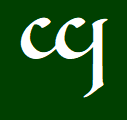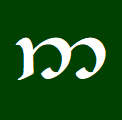6.26 Lace Q. raiwë n. “lace” A word for “lace” appearing in The Rivers and Beacon-hills of Gondor from the late 1960s from the root √RAY “net, knit, contrive network or lace, involve in a network, enlace” (VT42/12). The glossed form raiwe “lace” was deleted, but later in the same
Select Elvish Words
Studies on selected elvish words to sort out their semantics.
Select Elvish Words 6.21-6.25: Cloth, Wool, Silk
6.21 Cloth ᴹQ. lanne n. “tissue, cloth” A word in The Etymologies of the 1930s glossed “tissue, cloth” based on the root ᴹ√LAN “weave” (Ety/LAN). ᴱQ. lapil n. “swathe, flowing cloth” A word appearing as ᴱQ. lapil “a swathe, a flowing cloth” in the Qenya Lexicon of the 1910s under
Select Elvish Words 6.11: to Clothe, Clothes, Seamstress
6.11 to Clothe, Dress ᴱQ. vaimata- v. “to robe, *clothe; to get dressed, put on clothing” A word appearing as ᴱQ. vaimata- “robe” in the Qenya Lexicon of the 1910s, a verb form of ᴱQ. vaima “wrap, robe” (QL/100). Neo-Quenya: Since I retain the noun ᴺQ. vaima “wrap, robe” for
Select Elvish Words 5.91-5.94: Mead, Wine, Juice
5.91 Mead Q. miruvórë n. “mead, nectar, special wine or cordial, drink of the Elves, ⚠️(lit.) precious juice, [ᴱQ.] sweet drink” The Quenya word for the special Elvish drink of Rivendell, more commonly known by its (Sindarin) name S. miruvor (LotR/290), itself a loan word from Quenya (PE17/37). The Quenya
Select Elvish Words 5.86-5.89: Milk, Cheese, Butter
5.86 Milk ᴱQ. ilimba adj. “milky” A word appearing as ᴱQ. ilimba “milky” in the Qenya Lexicon of the 1910s, an adjectival form of ᴱQ. ilin (ilim-) “milk” (QL/42). Neo-Quenya: I retain ᴺQ. ilimba “milky” for purposes of Neo-Quenya as the adjectival form of ᴺQ. ilin “milk”. ᴱQ. ilin (ilim-)
Select Elvish Words 5.81-5.85: Salt, Honey, Sugar
5.81 Salt ᴱQ. singe (singi-) n. “salt” A noun appearing as ᴱQ. {singi >>} singe “salt” in the Qenya Lexicon of the 1910s and under the early root ᴱ√SIŊI (QL/83). The contemporaneous Poetic and Mythological Words of Eldarissa had ᴱQ. singi “salt” (PME/83). Early Qenya Word-lists of the 1920s had
Select Elvish Words 5.80: Berry
5.80 Berry ᴱQ. aipio n. “cherry” A word appearing as ᴱQ. aipio “cherry, holy berry” in the Qenya Lexicon of the 1910s, a combination of ᴱ√AYA¹ and ᴱQ. pio “berry” (QL/34, 74). It was also mentioned in the contemporaneous Poetic and Mythological Words of Eldarissa and Gnomish Lexicon (PME/34; GL/18).
Select Elvish Words 5.77-5.79: Nut, Oil
5.77 Nut Q. *pecco n. “nut” In notes from 1969, Tolkien had a word Q. pekkuvo “nut-hider” = “squirrel” (PE22/155). Since √KUB was “hide” in that document, the element pek- must be “nut”. Its form outside of compounds is unclear; the form pecco is a guess, originally suggested in a
Select Elvish Words 5.71-5.76: Fruit, Apple, Pear, Grape
5.71 Fruit ᴹQ. kuluma n. “orange [fruit]” A word for “an orange” (thus referring to the fruit) in The Etymologies of the 1930s derived from the root ᴹ√KUL “golden-red” (Ety/KUL). Conceptual Development: There was a noun ᴱQ. kulmarin (kulmarind-) “orange” in both the Qenya Lexicon and Poetic and Mythological Words
Select Elvish Words 5.65-5.70: Vegetables, Pea, Cabbage, Potato
5.65 Vegetables ᴱQ. kolosta n. “cucumber” An isolated word appearing ᴱQ. kolosta “cucumber” in the both the Qenya Lexicon and Poetic and Mythological Words of Eldarissa of the 1910s with no clear derivation (QL/47; PME/47). Neo-Quenya: I’d retain ᴺQ. colosta “cucumber” for purposes of Neo-Quenya as there are no later




